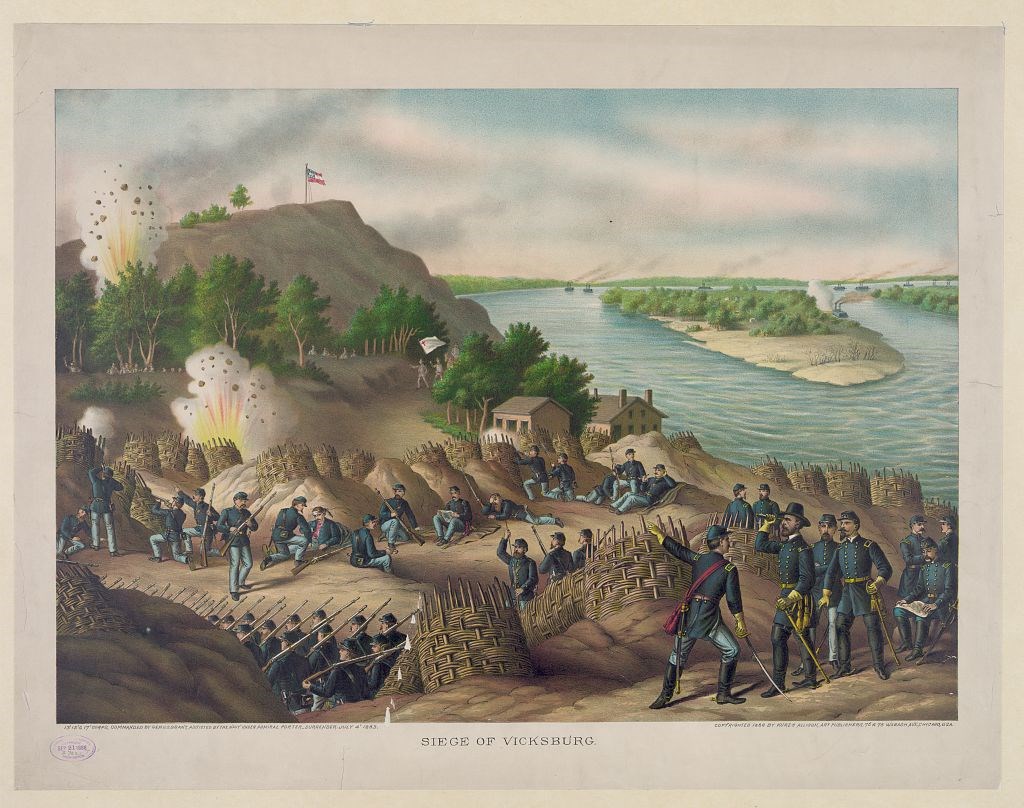Part of a series of articles titled The Odyssey of Ulysses.
Previous: Grant at Fort Donelson
Article

Library of Congress
In May of 1863, Ulysses S. Grant marched towards the final goal of his campaign: Vicksburg. Taking this Southern stronghold would allow the Union to control the Mississippi River and boost Northern morale. After a series of battles, Grant’s troops forced General Pemberton’s Confederate army to retreat into the defenses surrounding Vicksburg.
Vicksburg was well defended with rifle pits and fortifications as well as steep ravines that made it easy for Confederate forces to beat back Union assaults. Unable to force his army into the city, Grant ordered troops to prepare for a siege.
During the next two months, Union forces rained cannon fire down upon Vicksburg. The Confederates suffered in the unbearable summer heat and were forced to ration their few remaining supplies. Quickly, Union troops dug tunnels under the fortifications and detonated explosives that devastated the city. Still, the determined Confederate defenders held out.
The Confederates fought back. In the Battle of Milliken’s Bend, they were defeated by newly formed, minimally trained black regiments, many of which were formerly enslaved men from local plantations. Their victory was praised by Grant and President Lincoln and paved the way for the recruitment for the U.S. Colored Troops. This integration would later shape the policies and approaches to emancipation.
Fearful of a final assault and close to starvation, Confederate Generals decided to hear out Grant’s terms of surrender. They rejected Grant’s first response of unconditional surrender. Realizing his army could not support prisoners, he offered to let Confederate soldiers go with signed promises that, until exchanged, they would stop fighting the Union.
With the fall of Vicksburg, the North gained unrestricted access to the Mississippi River and cut the Confederacy’s supply and communication lines, splitting the would-be nation. An ecstatic President Lincoln celebrated the victory after months of relative inaction and Grant was appointed Chief of Armies, giving him complete control over Union forces. Although the war lasted two more years, this division ultimately led to the Confederate’s downfall.
Vicksburg National Military Park commemorates the campaign and siege. Here, visitors can walk or drive along historic trenches and earthworks and discover sites that impacted the assaults and siege. Visitors can also view over 1,300 historic monuments and markers, 144 historic cannons, and the USS Cairo Gunboat and Museum.
The Odyssey of Ulysses explores the saga of U. S. Grant from his first battle to his final resting place. For information on this Article Series project, contact us.
Part of a series of articles titled The Odyssey of Ulysses.
Previous: Grant at Fort Donelson
Last updated: June 4, 2025